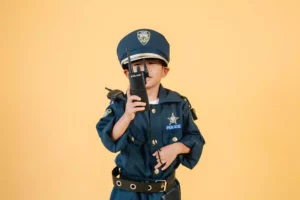As we have already seen, the technique of gamestorming has a lot to offer in the world of training and e-learning. Jumping in head first without proper preparation is, however, out of the question, at the risk of seeing all your efforts come to nothing.
Far from offering a simple list of games, Dave Gray, Sunni Brown and James Macanufo insist on the importance of having a good command of the rules of gamestorming before embarking on a session. Discover the five components of gamestorming and maximize your chances of success.
Ask questions
It is vital to conduct every stage in the game through questions. Questions stimulate participants’ minds and encourage a diverse range of responses and, therefore, of scenarios.
The creators of gamestorming have defined 4 types of questions to structure the experience:
- opening questions;
- navigating questions;
- examining questions;
- experimenting questions.
Opening questions
These are used at the start of the session. They make it possible to define the game world, as they lead the teams to identify the main themes to be explored during the game. These very open questions, such as ‘Can you define the problem we are trying to resolve?’, define the initial situation at the start of the game. By asking ‘What would you like to explore?’, the trainer has the participants list all possible ideas, whether feasible or otherwise. If, on the contrary, the game master asks, ‘What are the biggest difficulties we face?’, he or she limits the scope of possibilities and creates a more compact list on which to base the work. The term ‘opening’ refers first and foremost to brainstorming that should be as free and open as possible.
Navigating questions
These are used during the game. They serve to refocus the game and make sure everyone remains on the same wavelength. The trainer also uses them to ensure that the group remains positive and is happy to follow through with the process. Questions like ‘Are we on the right track?’ and ‘Is this helping us to achieve our goal?’ can refocus all the players. If the trainer asks, ‘Shouldn’t we write down the various points of our discussion so as not to forget them? or ‘Is the goal we set ourselves at the start of the game still the same or do we need to change it based on our reflections?’, he or she puts the goal into perspective in light of how the game is progressing. Everyone is therefore navigating through the game towards the same goal and with the same tools.
The authors schematize the questions via a double-entry funnel
Source: Gamestorming
Examining questions
These make it possible to hone in and focus on the details. They reduce the scope of analysis and qualify abstract ideas to make them concrete. Simple questions like ‘How does that work?’ or ‘Can you give me an example?’ force participants to develop their ideas. These are very useful questions to ask at the start of the examining phase.
Experimenting questions
These make it possible to explore the range of possibilities. Their aim is to deconstruct something or make it abstract and thus build bridges between ideas that originally appeared very disparate. A computer and an art book are, for example, similar in terms of their weight. Kitchen scales and a connected watch both work thanks to sensors. Some objects or concepts may converge on a number of criteria. Experimenting questions also make it possible to imagine new uses for things, through questions like ‘What other things function the same way?’. By taking a step back in this way, the imagination is stimulated.
Closing questions
The aim of closing questions is to converge opinions and select solutions. They make it possible to take action and reach a commitment. To this end, the trainer can ask participants questions like ‘Which objectives are feasible?’ or ‘What will each person’s role be?’.
Use artefacts
In the gamestorming world, artefacts are physical things on which ideas are written down. They can be Post-its, cards, sheets of paper or Bristol boards, for example. Ideally, each artefact should represent one idea.
You can choose how you want to arrange the artefacts: in a pile, in an organizational chart, in succession, linked (in the form of an instruction map, for example), in opposing columns (to highlight the pros and cons, for example), in a circle, etc. As long as they facilitate understanding and support the reflective process, they can be used in any format you want.
Artefacts can also take the form of images or projections if you need to flesh out your ideas.
The importance of images in the Speed Boat game
Source: Gamestorming
Use visual language
All forms of language are used in gamestorming: not only text and words, but also signs, symbols, images, figures, etc. You can take it further still and draw moving figures (in 2D or 3D), add perspective, etc. The possibilities are endless!
By adding another dimension to the information, the participants and trainer come to a new understanding.
Use improvisation
Improvisation has two key advantages for gamestorming: it teaches us to respond to unexpected situations and it encourages variations on a theme. In order to conduct effective and creative brainstorming, participants need to let go, to a certain extent. To this end, improvisation (particularly theatrical) helps people overcome their bashfulness and give free rein to their creativity. Bearing in mind that the aim of the exercise is not always clearly defined, participants are forced to trust their intuition and ingenuity to progress.
Practice makes perfect
Like any game session, gamestorming requires practice. The authors encourage you to test several games, assimilate their rules and practice them are regularly as possible. There is no miracle solution for creating new working methods. Practice is the only way of improving and ultimately bringing about real changes in how we think.
By mastering these things, trainers can manage the game better, ensure good conduct throughout the session and be sure of achieving their objectives. The participants are involved, creative and open to new ideas. All the ingredients for a great gamestorming session!












